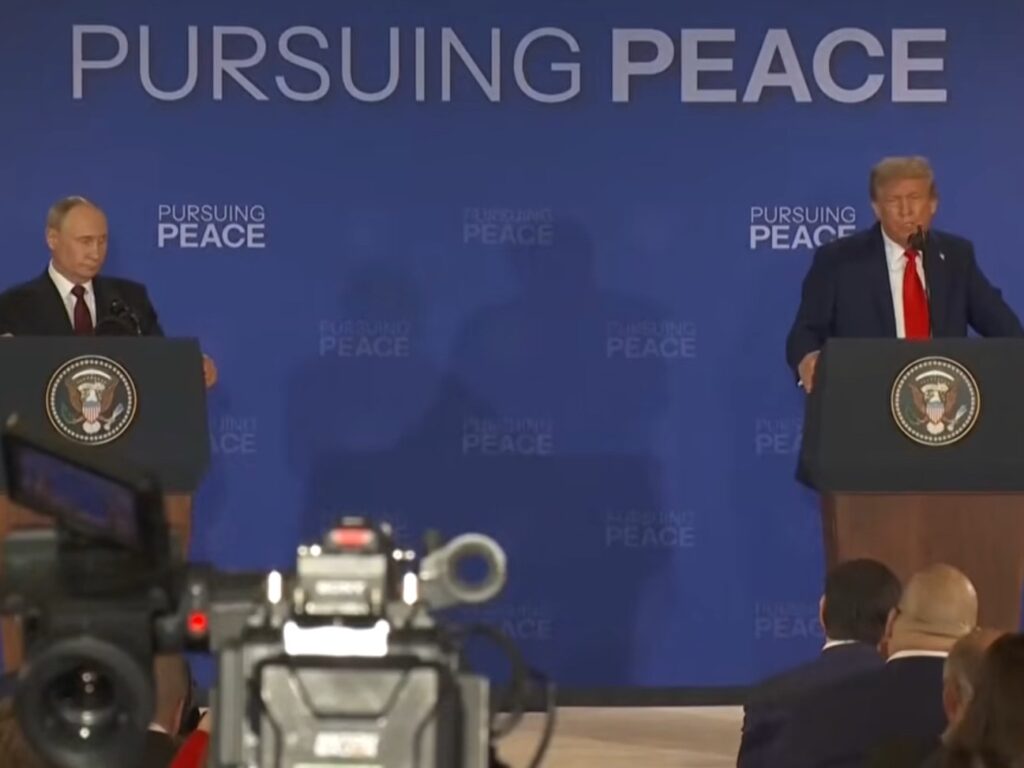
In a striking turn during the historic Alaska summit, former U.S. President Donald Trump declared there was “a very good chance of getting peace in Ukraine.” His optimism came amid a tense, high-stakes meeting with Russian President Vladimir Putin at Joint Base Elmendorf-Richardson, where discussions over Ukraine’s future were front and center.
What Happened in Alaska?
Pivoting from Ceasefire to Peace Deal
The summit marked a significant strategic shift: Trump abandoned his previous insistence on a ceasefire and instead advocated pursuing a comprehensive peace agreement. He reasoned that a long-term accord could ensure lasting stability—unlike temporary wartime truces.
A Summit of Contrasts
Despite framing the meeting as productive, no binding agreement was reached. Trump acknowledged progress on several fronts yet admitted that key issues remain unresolved—“a couple of big ones that we haven’t quite got there.” Still, he maintained that “we have a very good chance of getting there.”
Realms of Negotiation
Sources revealed that Putin floated proposals such as a potential cessation of hostilities along current front lines, combined with territorial concessions (notably Donetsk and Luhansk), in exchange for halting Russian withdrawal of forces—though these suggestions were met with firm rejection by Kyiv.
Security Guarantees: A Tentative Compromise
Emerging from the summit were also discussions around NATO-style security assurances for Ukraine, with Putin reportedly allowing such protections in principle—a rare concession in the context of the war.
The Road Ahead: Meetings, Critics, and Contention
Zelenskyy Steps In
With the summit concluded and no ceasefire on the table, Ukrainian President Volodymyr Zelenskyy is poised to meet Trump in Washington. The pivotal White House engagement could shape future diplomacy—but Ukraine has steadfastly rejected any deal involving territorial loss.
European Concerns
European leaders, while acknowledging diplomatic progress, voiced deep concern that Trump’s push for speed may undercut Ukraine’s sovereignty. They stressed that “peace must be fair, and Ukraine must be central in negotiations.”
Domestic Divisions in the U.S.
Critics accused Trump of giving Putin undue advantage, while others praised his willingness to engage directly. The debate has formed a key fault line in American politics, with both cautionary and hopeful voices jockeying for influence over peace strategy.
Why Trump’s “Very Good Chance” Matters
Reframing the Narrative — By shifting the focus from temporary pauses to full peace accords, Trump is seeking to reassert himself as a peace broker. Strategic Momentum — Even symbolic acknowledgments—like Russia’s openness to security guarantees—mark rare breakthroughs in an otherwise stalemated conflict. Potential Catalyst — A successful trilateral summit involving Trump, Zelenskyy, and Putin could significantly reshape diplomatic dynamics—though Moscow has yet to confirm such a meeting.
What Could Derail This Path?
Territorial Red Lines — Ukraine remains unwavering: it will not compromise the Donbas or other sovereign lands. Lack of Ceasefire — Without a cessation of hostilities, any peace deal remains fragile—or even impossible. Geopolitical Divide — European and American skepticism of Trump’s approach could anyone any forward traction.
Bottom Line
Trump’s declaration that “we have a very good chance of getting peace in Ukraine” captures a moment of fragile hope. Yet, as the world watches, peace will depend on heavy lifting—commitment, compromise, and inclusion of Ukrainian and European voices in every step forward.
